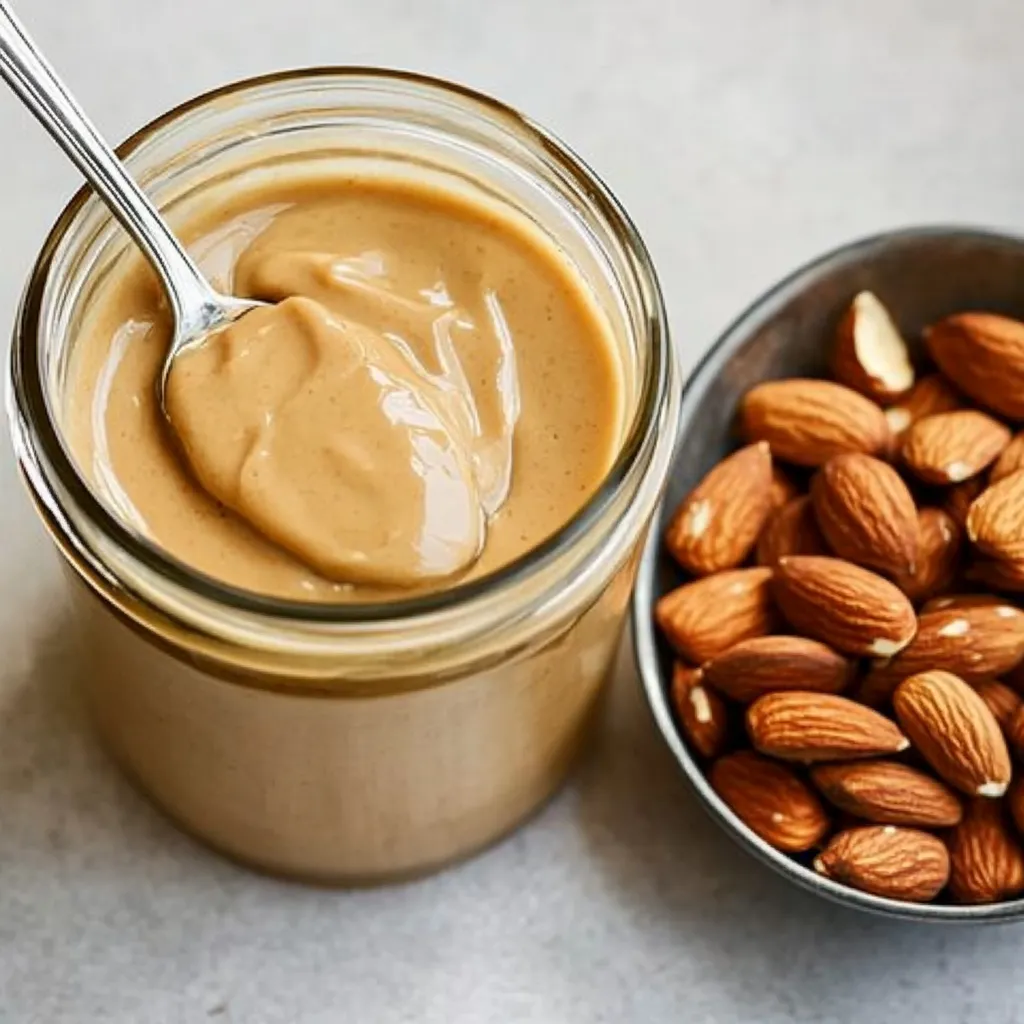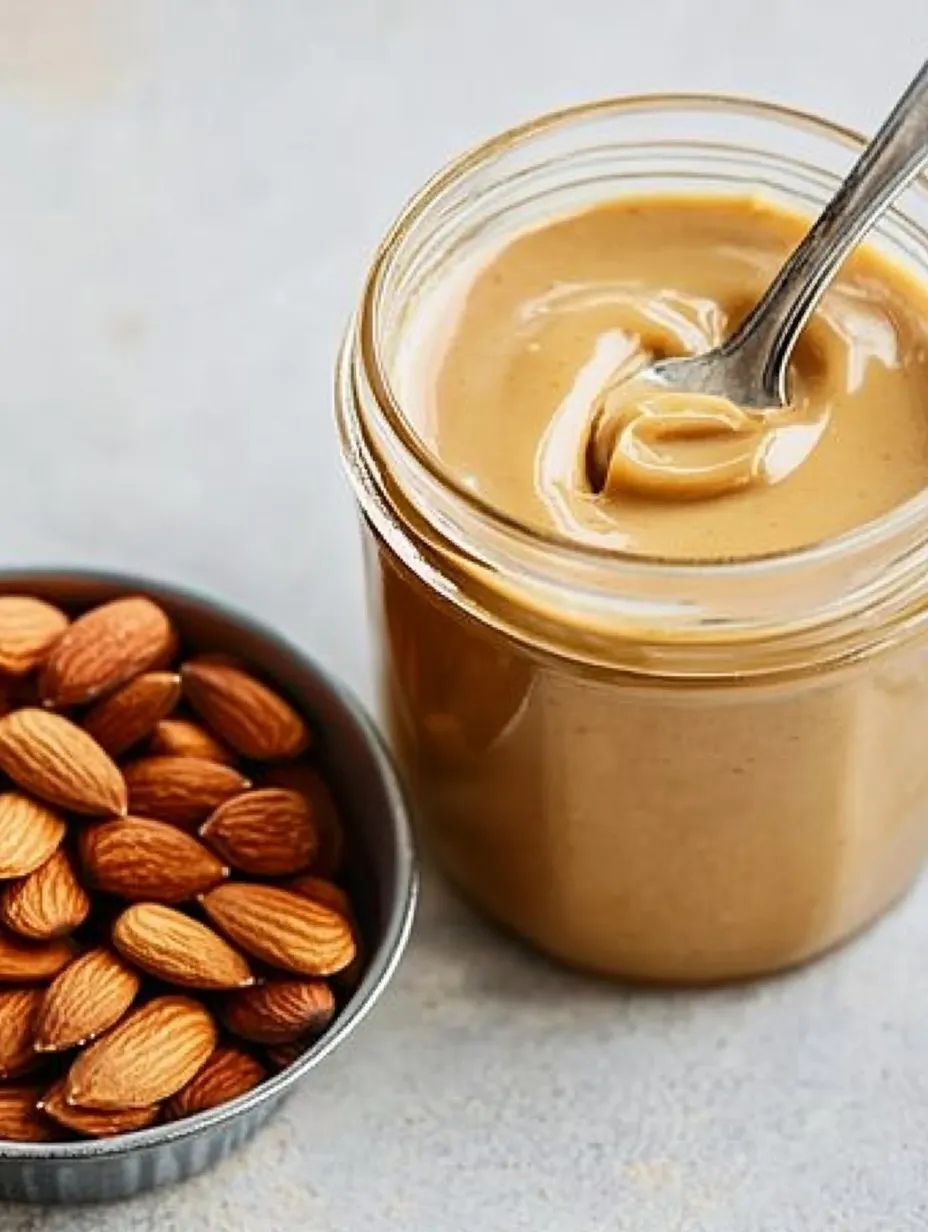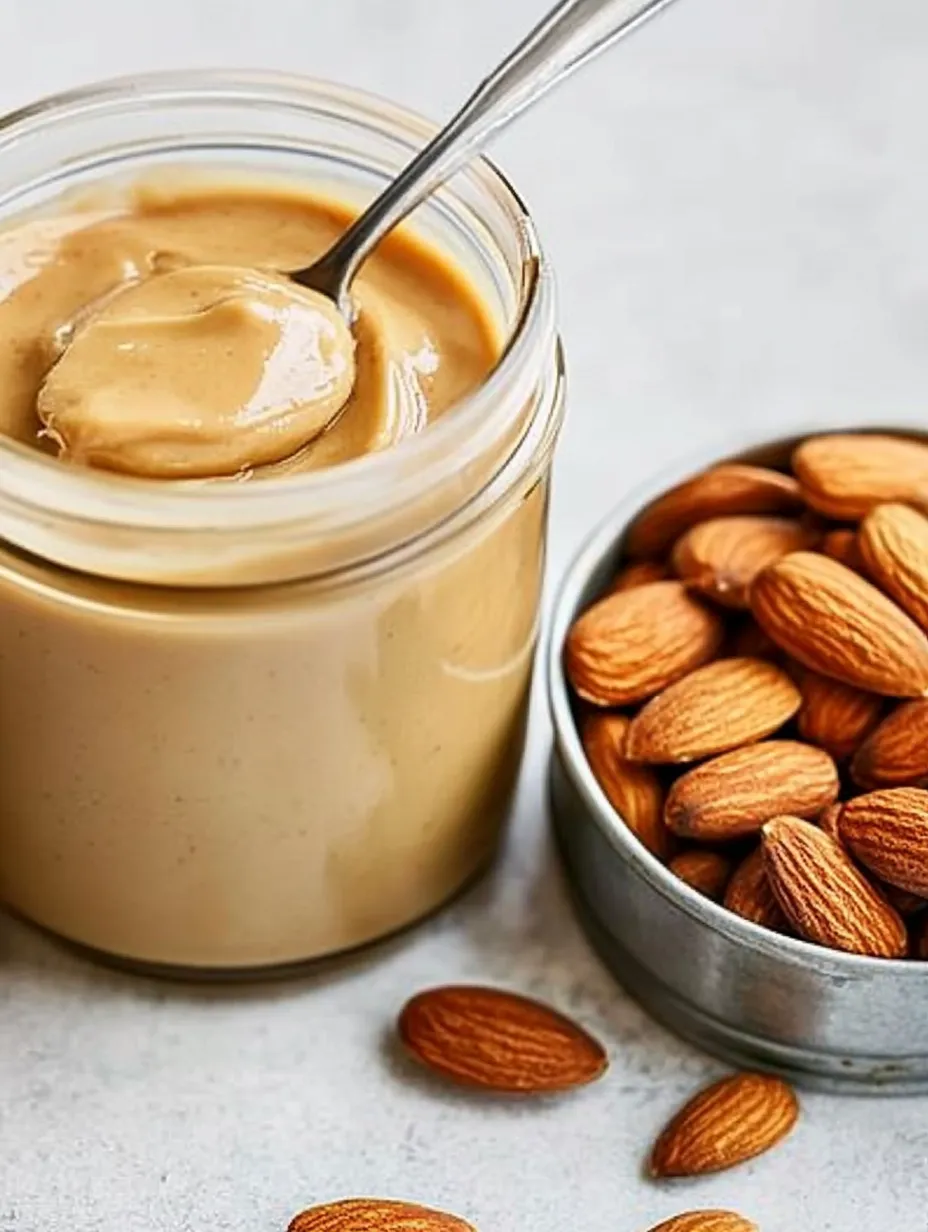 Pin it
Pin it
Homemade almond butter transforms pure almonds into a silky, aromatic paste. The slow processing of the roasted almonds releases their natural oils and creates a smooth consistency without additional ingredients.
When I made this almond butter for the first time, I was surprised by the intensity of the almond flavor.
Carefully Selected Ingredients
- Almonds: Untreated for best flavor
- Salt: Enhances the almond taste
- Vanilla: Optional for additional depth
- Water: Boiling for peeling
- Oil: Optional for extra smoothness
 Pin it
Pin it
Detailed Preparation
- Almond Pretreatment:
- Blanch almonds. Carefully remove skins. Thoroughly dry. Roast evenly.
- Roasting Process:
- Properly preheat oven. Distribute almonds evenly. Monitor roasting level. Allow to cool.
- Blending Process:
- Process in portions. Pause regularly. Scrape down sides. Check consistency.
- Finalization:
- Incorporate spices. Test smoothness. Fill containers. Refrigerate.
In my kitchen, this almond butter has become the basic recipe for many other creations.
Perfect Uses
- Enjoy the almond butter pure on fresh bread
- As a base for smoothies, it provides creamy texture
- In baking recipes, it partially replaces butter
- For muesli and porridge, it offers a protein-rich addition
Creative Variations
- Cocoa makes it chocolatey
- Cinnamon and vanilla give Christmas flavors
- A version with maple syrup becomes naturally sweet
- Espresso powder is suitable for coffee lovers
Optimal Storage
- The almond butter keeps in sterilized jars for up to three months
- Store in a cool, dark place
- Oil separation is natural and can be stirred back in
- A silica packet in the lid prevents moisture
Time Management
- The production requires time and patience
- Plan sufficient breaks for the blender
- Monitor the roasting of the almonds carefully
- This organization guarantees perfect results
 Pin it
Pin it
Practical Tips
- The almonds must be completely dry before roasting
- A powerful blender is essential
- Regularly push the mixture down
- The consistency becomes creamier over time
Professional Kitchen Tips
- Don't grind almonds too finely before roasting
- Allow the blender to cool down in between
- Rinse jars with hot water before filling
After many experiments with nut butter variations, this version has proven to be the perfect balance between effort and taste. The intense almond note and the silky texture make this butter a high-quality alternative to purchased products. I find it particularly fascinating how the almonds change their consistency so dramatically through mechanical processing alone.
Frequently Asked Questions
- → Why do the almonds need to be roasted?
- Roasting intensifies the flavor and releases the oils, which makes mixing easier.
- → How long does the almond butter keep?
- In a clean, airtight jar at room temperature for about 2-3 months.
- → Do I absolutely need a high-powered blender?
- Yes, a regular blender cannot achieve the necessary fineness and could overheat.
- → Why isn't my almond butter getting creamy?
- Mix longer and take breaks. Optionally add a little neutral oil to support the process.
- → Can I also buy peeled almonds?
- Yes, that saves time. Still roast the almonds as this enhances the flavor.
